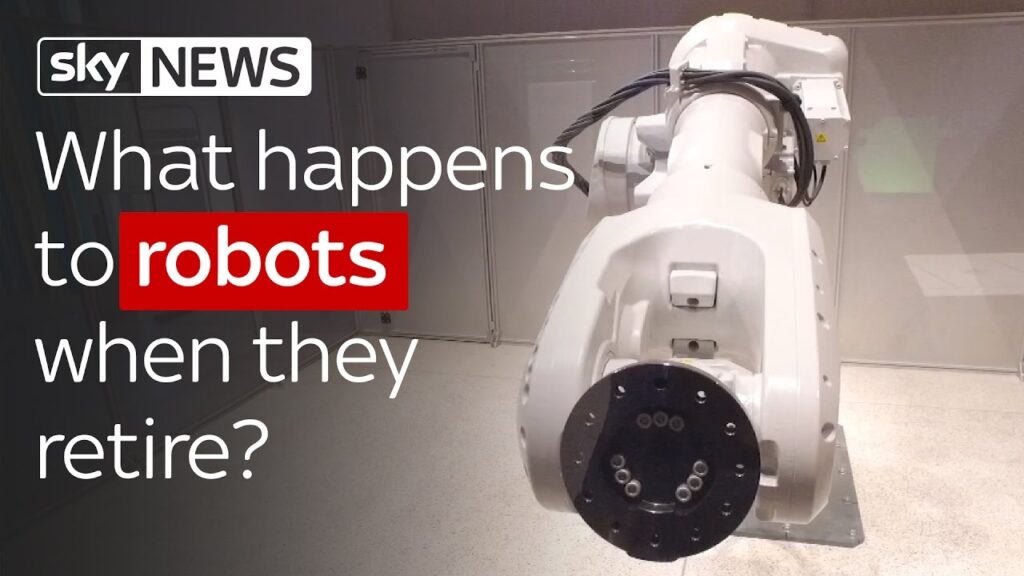While the widespread integration of robots into various industries has heightened concerns about job displacement, another question arises: What happens to these machines when they themselves retire? It seems that we seldom ponder the fate of these technological marvels that have become an integral part of our daily lives. In this article, we will explore the different types of industrial robots and delve into the potential outcome of their retirement.
The use of industrial robots has revolutionized numerous sectors, ranging from manufacturing and logistics to healthcare and agriculture. These mechanical wonders are designed to automate repetitive tasks, enhance productivity, and improve overall efficiency in the workplace. However, with the advancement of technology, the inevitable question of their retirement emerges.
Types of Industrial Robots
Before unveiling the fate of retired robots, let us first familiarize ourselves with the types of industrial robots that dominate the manufacturing landscape. There are several classifications, each serving a unique purpose:
1. Cartesian Robots: These robots operate on three linear axes (X, Y, and Z) and follow a grid system to navigate their workspace. They are commonly used in pick and place operations, welding, and assembly tasks.
2. SCARA (Selective Compliance Assembly Robot Arm) Robots: Ideal for tasks that require high-speed and precise movements, SCARA robots feature two parallel rotary joints that provide flexible motion. They are often employed in assembly lines and electronic manufacturing.
3. Delta Robots: Known for their speed and agility, delta robots utilize three arms connected to a central base. These robots excel in tasks that involve rapid picking, packaging, and sorting applications.
4. Articulated Robots: With their resemblance to the human arm, articulated robots boast an articulated series of joints that enable them to perform complex movements. This type of robot finds extensive use in welding, painting, and material handling.
5. Collaborative Robots (Cobots): Designed to work alongside human workers, cobots prioritize safety and cooperation. They are revolutionizing industries by complementing human labor and assisting with repetitive tasks.
The Retirement Conundrum
Now that we have a comprehensive understanding of the various types of industrial robots, it is essential to address their eventual retirement. Although the lifespan of a robot largely depends on its application and maintenance, the second phase of its "life" after retirement demands serious consideration.
One potential outcome for retired robots is re-purposing. A retired robot from a factory line may find a new role in a different sector or as a teaching tool in educational institutions. By repurposing, we can extend the lifespan and utility of these machines, maximizing their value even after retirement.
Alternatively, recycling robots can be a viable solution. With the advent of sustainable practices and the growing emphasis on eco-conscious initiatives, recycling retired robots will become increasingly important. This process involves dismantling the robot and extracting valuable materials while managing and disposing of hazardous components responsibly.
Furthermore, the rise of robot retirement homes or refurbishment centers may provide another avenue for these machines. Similar to how we care for aging humans, retired robots could be refurbished, updated, and prepared for a "second career" or assisted living in a different industry. These centers could also serve as repositories for spare parts and components, creating a sustainable ecosystem for maintaining and extending the lifespan of industrial robots.
The Possibility of Robot Sentience
While the concept of retired robots retains a certain practicality, some intriguing questions arise when considering the potential sentience or consciousness of these machines. As technology advances, we may encounter robots that develop self-awareness and consciousness during their operational lifespan. If this were to happen, the issue of robot retirement would become even more complex. Would it be ethical to terminate the existence of a conscious being?
This raises important ethical considerations and underscores the necessity for ongoing research, discussions, and regulations regarding the development and use of advanced robotic technologies. As we venture into the future, it is crucial to approach these topics with care and consideration for all parties involved.
In conclusion, the integration of robots into our daily lives and various industries has undoubtedly transformed the way we work. However, the question of what happens to these machines when they retire is one that demands our attention. Whether through re-purposing, recycling, or refurbishment, we must carefully navigate the next phase of a robot's "life." Additionally, as technology progresses, the possibility of robots developing consciousness adds a layer of complexity to the issue. The key lies in fostering dialogue and implementing responsible practices to ensure a harmonious coexistence between humans and robots, from their inception to their eventual retirement.
Industrial Robot
"Exploring the Fate of Retiring Industrial Robots: A Deep Dive into the World of Industrial Automation"


